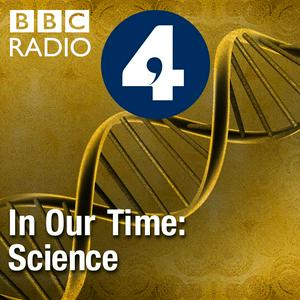The Evolution of Lungs
Melvyn Bragg and guests discuss the evolution of lungs and of the first breaths, which can be traced back 400 million years to when animal life spread from rock pools and swamps onto land, as some fish found an evolutionary advantage in getting their oxygen from air rather than water. Breathing with lungs may have started with fish filling their mouths with air and forcing it down into sacs in their chests, like the buccal pumping that frogs do now, and slowly their swimming muscles adapted to work their lungs like bellows. While lungs developed in different ways, there are astonishing continuities: for example, the distinct breathing system that helps tiny birds fly thousands of miles now is also the one that once allowed some dinosaurs to become huge; our hiccups are vestiges of the flight reaction in fish needing more oxygen; and we still breathe through our skins, just not enough to meet our needs.With:Steve Brusatte
Professor of Palaeontology and Evolution at the University of EdinburghEmily Rayfield
Professor of Palaeobiology at the University of BristolAndJonathan Codd
Professor of Integrative Zoology at the University of ManchesterProducer: Simon Tillotson Reading list:Roger B. J. Benson, Richard J. Butler, Matthew T. Carrano and Patrick M. O'Connor, ‘Air-filled postcranial bones in theropod dinosaurs: physiological implications and the ‘reptile’–bird transition’ (Biological Reviews: Cambridge Philosophical Society, July 2011)Steve Brusatte, The Rise and Fall of the Dinosaurs: A New History of a Lost World (Mariner Books, 2018)Jennifer A. Clack, Gaining Ground: The Origin and Evolution of Tetrapods (2nd edition, Indiana University Press, 2012)Camila Cupello et al, ‘Lung Evolution in vertebrates and the water-to-land transition’ (eLife, July 2022)Andrew Davies and Carl Moore, The Respiratory System (Elsevier, 2010) Kenneth Kardong, Vertebrates: Comparative Anatomy, Function, Evolution (8th edition, McGraw-Hill Education, 2018)Ye Li et al, ‘Origin and stepwise evolution of vertebrate lungs’ (Nature Ecology & Evolution, Feb 2025) P. Martin Sander and Marcus Clauss, ‘Sauropod Gigantism’ (Science, Oct 2008)Goran Nilsson, Respiratory Physiology of Vertebrates: Life With and Without Oxygen (Cambridge University Press, 2010)Steven F. Perry et al, ‘What came first, the lung or the breath?’ (Comparative Biochemistry and Physiology, Part A: Molecular & Integrative Biology, May 2001)Michael J. Stephen, Breath Taking: The Power, Fragility, and Future of Our Extraordinary Lungs (Grove/Atlantic, 2022)Mathew J. Wedel, ‘The evolution of vertebral pneumaticity in sauropod dinosaurs’ (Journal of Vertebrate Paleontology, Aug 2010)In Our Time is a BBC Studios Audio ProductionSpanning history, religion, culture, science and philosophy, In Our Time from BBC Radio 4 is essential listening for the intellectually curious. In each episode, host Melvyn Bragg and expert guests explore the characters, events and discoveries that have shaped our world.


